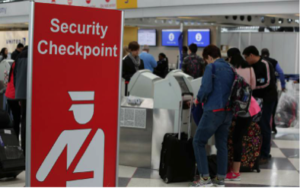Cyber Security Threats Land at Airports
For those of us who travel regularly, either for business or pleasure, airport security has become a pressing topic and important component to national security. It is often emphasized by tragic events around the world, like the airport bombings in Brussels this spring, and the more recent airport bombings in Istanbul. The list of precautions that airports take nowadays is extensive, all aimed at ensuring people’s safety while traveling.
As cyber security threats develop and grow, the need to protect people becomes even more critical, as cyber attacks on airports can lead to the actual physical harm of individuals. Therefore, preemptive measures need to be taken to protect an airport network from malicious actors, along with all of the physical measures that are already established.
What targets do hackers choose when it comes to airports?
There are many computer systems that airports need in order to function properly. Navigation, reservation, onboarding, and off-boarding systems are just a few of them. Also, a countless number of computers that employees, service providers, and managers use on a daily basis are central to airport operations.
What ways can hackers exploit weaknesses in cyber security?
- Phishing attacks – affecting the whole aviation industry. As reported by the Center for Internet Security (CIS), there have been successful phishing attacks against employees of the aviation industry. An Advanced Persistent Threat foreign group, whose resources are of the level and accessibility of a state or a large organization, repeatedly targeted 75 airports. According to the CIS, two of the airports were successfully compromised, although stabilized shortly after.
- WiFi-based attacks – which, in the worst case scenario, could lead to compromising an aircraft’s avionics equipment and satellite communications. Obvious catastrophic implications could follow such as gaining control of internal systems and security controls.
- Remote hijacking – caused when an attacker exploits an aircraft’s security vulnerabilities to gain an in flight “remote control” position, enabling them to take full control of the aircraft.
- Jamming attacks – can directly affect and interfere with air traffic control systems by jamming tracking and communications signals, resulting in the loss and/or corruption of navigation and air traffic control information.
- Denial of service (DoS) attacks – with the purpose of making networks and machines crash or become unavailable to its users.
A more recent instance of a cyber attack was reported by Vietnam’s Thanh Nien News. Allegedly, a powerful hacker group from China carried out a cyber attack against Vietnam’s airports at the end of July. The attack caused major delays, affecting more than 100 flights. The hacker group manipulated the flight information screens causing them to display distorted information. Also, the hackers gained access to the Vietnam Airlines Website, and stole and leaked the information of about 400,000 frequent flyer members.
All of these threats are potentially disastrous, especially because of the context in which they take place. While some security implementations require time and resources in order to be put into effect, others, such as preventing phishing attacks, could be addressed through regular staff training and testing. Employees at all levels in any type of organization need to be trained to recognize, report, and respond to cyber security threats in a timely and effective manner.
While the hope is that airports will mature and become more “cyber responsible”, the truth is that every industry should be aware of the risks. Regardless of the business, organizations need to be aware of cyber security threats and make sure to keep up with security implementations. Cyber attacks constantly evolve along with, or even outpace, security technology. If companies and agencies don’t keep up with them, cyber security risks will continue to increase.
The American Association of Airport Executives met on June 28 and June 29, 2016, to assess cyber security threats to the Aviation industry.
As always, for any question or information, please contact us at [email protected].
Enjoy!


